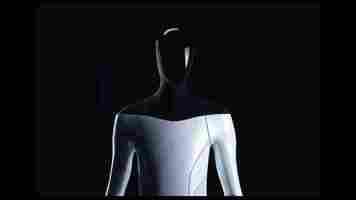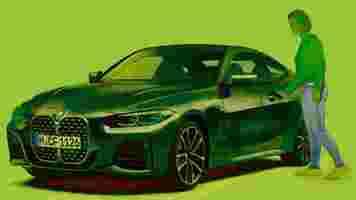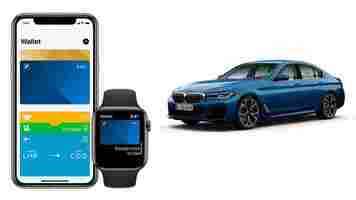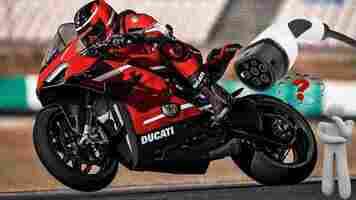Tesla’s app outage exposes the bigger problem of IoT
Is there ever a week without some kind of fuck up at Tesla ? If it was a lesser brand, I’d think it was a ploy for publicity, but the latest app bug was way too severe for that.

Last Friday, the BBC wrote that about 500 users reported an error on the Tesla app at around 4:40 ET (10:40 CET) that left car owners unable to unlock the doors or start their cars.
Since the company has no PR team ( Elon sacked them ), it was Elon Musk to the rescue. So he went on Twitter to keep stranded drivers updated. I’m glad he was able to take a break from tweeting about the acronym for his Texas Institute of Technology & Science to help those poor souls.
So when a car journo sent out a message to the Twitterverse, Elon Musk was ready to listen:
To Musk’s credit, the solution was found quickly — so the app bug didn’t end up as a total catastrophe. It’s also fair to point out that you can operate a Tesla without the app: there’s a key fob for Model S and Model X and a key card for Model 3.
But of course, you’re unlikely to be carrying these with you when you’re already using the app! And this is where the best plans fail, when the unexpected happens.
The failure of the app exposes bigger problem with IoT connected devices
Rest assured, the Tesla problem is resolved. But I can’t help wondering why Tesla didn’t learn from the smart lock and connected device fiascos that have plagued other industries.


The problem is that connected devices, as much as we’d like to think otherwise, are fallible, and they’re likely to fail at the worst possible time.
I’ve been an IoT journalist for a fair while and there are two smart devices I tell people never to buy — door locks and pet feeders. I’ve written countless stories about smart locks that either inadvertently lock people in, out, or don’t lock at all.
Whether it’s arriving at a rented Airbnb only to find yourself locked out due to an app glitch, or discovering all your rental properties have been simultaneously unlocked because of a software upgrading error — it happens far too often.
Also on my internet of shit list is smart pet feeders. Take one brand: the Petnet automated pet feeders should feed your cat using preset timers controlled by an app. Great idea… until they experienced a big system failure in 2016, then again in 2020 . For most loving pet owners, that’s just too big a risk to take.
Tesla’s got bigger things to deal with
So, yeah, the Tesla app debacle is small fry, really. It’s not like a Tesla bricking it on a highway .
I’d add that any good smart lock design includes backup strategies and fail-safes. An example might be allowing a user to store two versions of firmware on the same device, so if one does not operate correctly, they can revert to the other — just like how escalators still provide their basic function while broken .
At least Tesla owners could operate their cars by other means — they just didn’t have them handy at the time.
But we’re entrusting Tesla tech with an awful lot of tech that if it fails, has the ability to end lives. If they can’t get a simple connected app right, what does this mean for the long term?
Android you can start my car: BMW’s new connected car capabilities
E arlier this month, we saw Android issue an important update . The update enables Android users to use their mobile to lock, unlock, and even start a compatible car. The most interesting factor is the use of Ultra Wideband technology.

In reality, we’ve been able to start our cars remotely using products like Viper’s Smart Start since 2009. Apple tech could lock, unlock and start your car with an iPhone or Apple Watch using NFC since 2020. Teslas have had these capabilities (with various degrees of success ) since 2017.
The Car Connectivity Consortium ushers in Ultra Wideband technology
The most significant evolution in the space has been thanks to The Car Connectivity Consortium (CCC), a cross-industry collaboration in developing global standards and solutions for smartphone and in-vehicle connectivity.
In July, the CCC released Digital Key 3.0. This standardized ecosystem enables mobile devices to store, authenticate, and share Digital Keys for vehicles in a seamless, secure, and privacy-preserving way. Specifically, release 3.0 adds hands-free, location-aware keyless access and location-aware features.
This is achieved by combining Ultra Wideband (UWB) technology and Bluetooth Low Energy. Support for NFC technology ensures backward compatibility and battery-low mode.
The next best thing to Bluetooth and NFC is poised to do big things
The big deal here is the Ultra Wideband tech. While NFC typically requires you to get close to your car in a range of inches, the UWB makes it possible to connect from distances of three meters or more. However, UWB lets you perform the same functions from a much longer distance (upwards of 10 feet or more). This makes it possible to start your car without even taking your phone out of your pocket.
Supplier of chips to Samsung, NXP, first started implementing UWB tech into their chips in 2020. The company notes that UWB delivers greater accuracy in line-of-site and strong localization in non-line-of-sight scenarios — and is capable of managing environments in which numerous walls, people, and other obstacles would typically block these signals.
This sets the scene for a great range of use cases in the near few years, but…
We’ve still got a long way to go before roll-out
In the case of Android, it only works with Samsung Galaxy S21, Google Pixel 6, and Pixel 6 Pro. Android is beginning its partnership with BMW, although as Android Auto is available in over 60 brands and 500 models , we can expect this capability to go mainstream.


The BMW Digital Key can also start the engine by placing your mobile in the BMW wireless charging compartment. In the next release, it will be possible to pass the key on to five friends.
According to BMW , “It can be easily configured via My BMW app and is then available as an option for almost all BMW models.”
IoT technology is not without its pain points, especially regarding security, interoperability, and reliability. But Android is bringing the mobile and auto worlds just a little bit closer. This is just the beginning.
An electric Ducati sounds awesome — but it won’t happen until battery tech improves
Ducati is waiting for better battery tech before it branches out into electric motorcycles, CEO Claudio Domenicali said to MOTO.IT .

Domenicali explained that lithium-ion batteries may have significantly evolved over the years, but they’re still not advanced enough to store enough energy, while simultaneously keeping the current weight of the bike. He also hinted at the prospect of solid state batteries as a possible solution.
This announcement confirms Ducati’s VP of Sales Francesco Milicia’s earlier statement that the company won’t produce an electric motorcycle anytime soon, as it “cannot guarantee the pleasure, the range, the weight etc. that Ducati riders expect.”
These concerns about battery energy and performance seem rather weak, given that fellow motorcycle makers have already rolled out impressive electric models using the current lithium-ion battery technology.
For instance, Italian sport bike maker Energica produces various versions of its Energica Ego with city ranges of 400km and mixed ranges of 230km, thanks to a high capacity 21.5 kWh battery pack.
In fact, even though the Energica Ego is 20% heavier than a Ducati, it still beats down the Paginale model with a 2.6-second 0-60 mph acceleration, compared to 2.9 respectively.
Similarly, Triumph is developing its TE-1 electric motorcycle featuring a battery capacity of 15 kWh with a range of approximately 200km, while Zero Motors has introduced its Z-Force power tank which upgrades its current models to 18 kWh of battery capacity with 259km city range, and 180km on a highway.
So why Ducati would go back on its 2019 promise for an electric future remains very much unclear.
HT – Electrek
Do EVs excite your electrons? Do ebikes get your wheels spinning? Do self-driving cars get you all charged up?
Then you need the weekly SHIFT newsletter in your life. Click here to sign up .